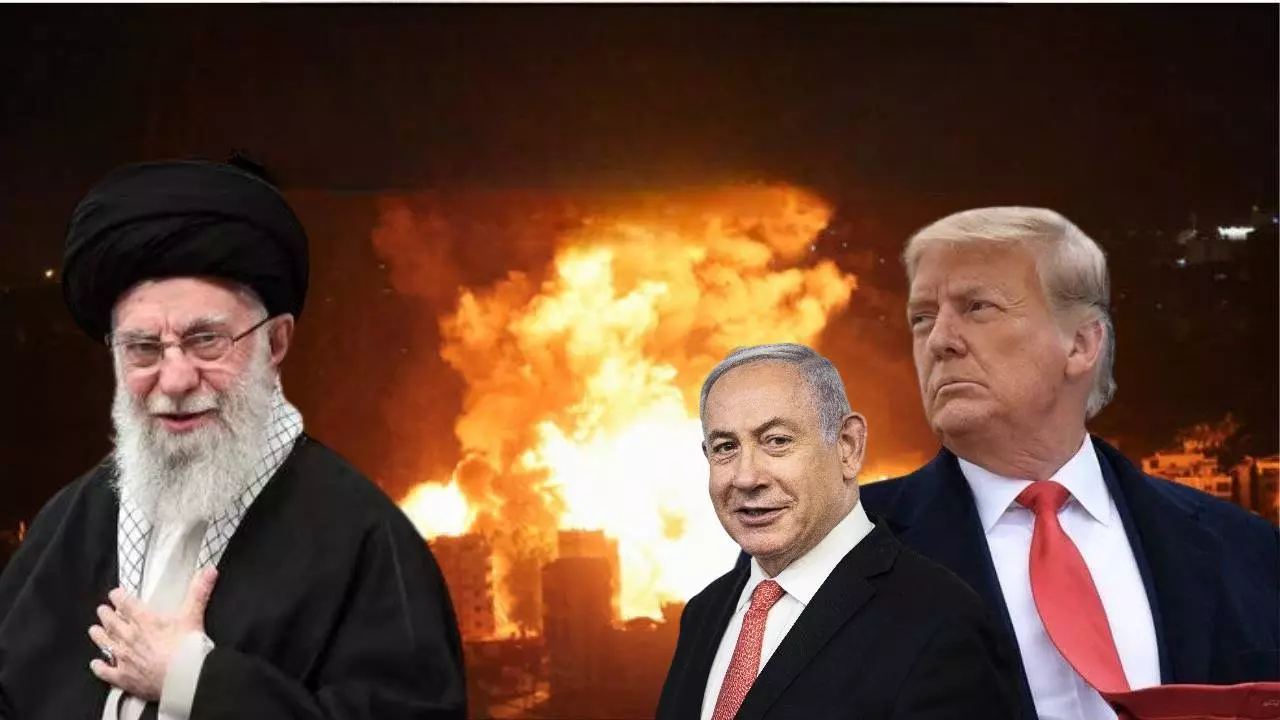- P.O. Box: 11482 Yaoundé, Cameroon; Headquarters: Efoulan, Yaoundé 3
- contact@caessinternational.org

What if the U.S. strikes on Iranian nuclear sites ultimately failed to achieve their strategic objective? While Donald Trump claims credit for having negotiated a ceasefire between Israel and Iran, multiple reliable sources suggest that Tehran had time—before the strikes on Isfahan, Natanz, and Fordow—to move critical stocks of uranium hexafluoride enriched to 60% by truck. Twelve days ago, by launching a direct attack on Iran, Benjamin Netanyahu aimed to deal a decisive blow to a hostile regime that has threatened Israel since 1979. But where does that ambition stand today?
It all began on October 7, 2023, in Gaza, with the deadly Hamas attack on Israeli territory. The Israeli state responded with a massive military operation aimed at destroying Hamas’s capabilities, viewing it as a pillar of the Iranian-led "Axis of Resistance." After twenty months of war, Israel claims to have dismantled much of Hamas's military apparatus, notably through the assassination of Yahya Sinwar on October 17, 2024, in Rafah. However, the war has claimed the lives of approximately 56,000 Palestinians, according to Hamas figures considered credible by the UN. Just yesterday, the United Nations again urged Israel to “stop shooting civilians searching for food,” in the face of a population “starving and desperate.”
On October 8, 2023, the day after the Hamas attack, Hezbollah joined the war from Lebanon, opening a second front for Israel. On September 27, 2024, the killing of Hassan Nasrallah in Beirut seriously weakened the Shiite militia. A ceasefire was reached in November, although Israeli strikes on Hezbollah positions have continued sporadically. Militarily and politically, Hezbollah has emerged weakened, while Lebanon has chosen not to become directly involved in the war between Israel and Iran.
Even Syria now seems to be breaking away from Iran’s orbit. In December 2024, Ahmed Al-Charaa overthrew the regime of Bashar al-Assad. Since then, Damascus has moved closer to the Gulf monarchies and is attempting to adopt a neutral stance toward Israel—despite the ongoing occupation of the Golan Heights.
Taken together, these developments—the fall of Assad, the weakening of Hamas and Hezbollah, and the growing isolation of Iran—might be viewed as a strategic victory for Israel. And yet, the Islamic Republic of Iran still stands. A poignant question remains: what future awaits Gaza, where the war continues with extreme violence, in blatant violation of international law?